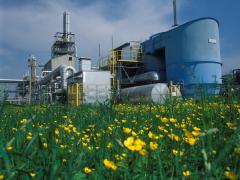Renewable energy sources: their global potential for the first-half of the 21st century at a global level: an integrated approach
Decision-makers, societal groups and scientists have at various moments in time expressed their interest in renewable energy sources such as power from wind, sun and biomass-derived fuels. Recently, this interest has been on the rise again. Several reasons are mentioned for this: the risk of energy supply insecurity and the corresponding need for resource diversification, the prospect of depletion and hence cost increases of conventional oil and gas occurrences and the adverse impacts of climate change and local air pollution as a result of fossil-fuel burning related emissions.
The concerns show up in questions asked by policy makers, citizen groups and industrial firms: How fast can renewable energy sources expand? When will they be competitive with conventional energy options? Which role can they play in reducing greenhouse gas emissions and which are the best policy instruments to stimulate their introduction? To answer such questions adequately, it is necessary to have proper insight in the potential availability of renewable energy sources at different costs levels, and also in the evolution of the energy system in which these resources have to be implemented.
Abstract
The risk of human-induced climate change and the volatility of world oil markets make non-fossil fuel options important. This paper investigates the potential for wind, solar-PV and biomass (WSB) to deliver energy. The focus is on land opportunities and constraints and on production costs as a function of resource availability and depletion and of innovation dynamics. The context is provided by the IPCC SRES scenarios as simulated with the IMAGE 2.2 model. We explicitly consider several sources of uncertainty, aspects of the food vs. energy trade-off and the effects of interaction between the three options through their claims on land. We show that ‘potential production’ concepts are strongly dependent on the chosen land-use scenario - and should therefore be used with an indication of the underlying assumptions.
Our results indicate a potential for liquid biofuels in the order of 75-300 EJ year-1 and for electricity from WSB options at production costs below 10 c kWh-1 of 200-300PWh year-1. Theoretically, future electricity demand can be amply met from WSB sources in most regions by 2050 below 10bkWh-1, but major uncertainties are the degree to which land is actually available and the rate and extent at which specific investment costs can be reduced. In some regions, competition for land among the three WSB options may significantly reduce the total potential as estimated from simple addition - which is another source of uncertainty.
Authors
Specifications
- Publication title
- Renewable energy sources: their global potential for the first-half of the 21st century at a global level: an integrated approach
- Publication date
- 18 June 2007
- Publication type
- Publication
- Magazine
- Energy Policy 2007; 35:2590-610
- Product number
- 92018




